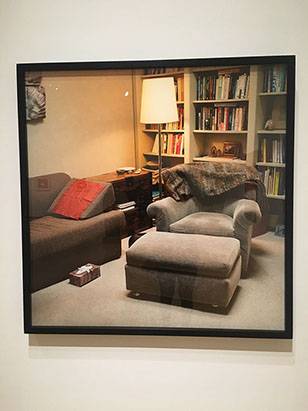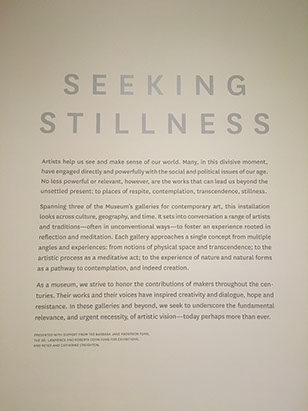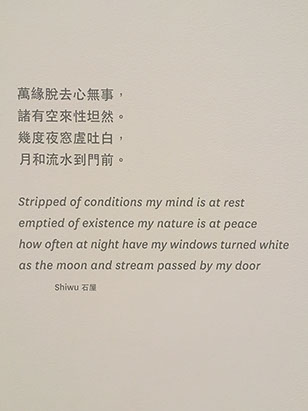Seeking Stillness at the MFA
By Flannery Gallagher
Joan Mitchell, Chamonix, 1962, oil on canvas, Museum of Fine Arts Boston.
About a week ago, I was feeling overwhelmed with all the goings-on of second semester. It seemed like I had a million thoughts rushing through my head at once. I decided that the best remedy for the situation would be to go to the Museum of Fine Arts, find a comfortable place to sit in one of the exhibits, and disconnect from campus life for a while. I find it incredibly relaxing to go to a museum alone and blend into the quiet background for a few hours. So, the Sunday before last I decided I would travel over to the MFA and see what new exhibits were featured that would allow me to just sit and focus on art. When I walked in and bought my ticket, I noticed an exhibit called Seeking Stillness. Based on the name alone, it sounded like a perfect escape from the stress of the outside world.
According to the gallery description, the purpose of Seeking Stillness is to “...set into conversation a range of artists and traditions--often in unconventional ways--to foster an experience rooted in reflection and meditation.” The gallery is split into three separate parts: Spaces, Process, and Nature. Quotes mentioning the importance of self-reflection and inner peace, interspersed with descriptions of the featured works, line the walls. Spaces features works such as Shellburne Thurber’s West Newton, MA: Office with brown couch and red paper pillow protector (pictured above). The purpose of this segment is to highlight the importance of personal space to an artist. The curators took an interesting approach, however, in that they did not solely feature scenes of physical comfort or solitude; several of the works also demonstrate the importance of the mind as a space for the artist, and what kind of mentality a creator must inhabit in order to create their art. Process, which features works such as Okada Kenzō’s A Story, focuses on what kind of actions it takes for a work to actually be created. For example, next to Kenzō’s canvas, the description explains that he associated his paintings with a “beauty characterized by quietude, tranquility, and mystery.” The purpose of the works featured in this section is to indicate to the viewers that the creation of a work of art often reflects the artist’s inner self; in these particular works, the inner selves of the artists were filled with peace and solitude. Finally, Nature examines the relationship between creativity and the natural world. Joan Mitchell’s Chamonix is just one of the stunning works featured in this final segment. In its description there is a quote from Mitchell which states, “I paint from remembered landscapes that I carry with me—and remembered feelings of them, which of course become transformed.” While Spaces and Process center around how personal creativity is, Nature has a universality to its works; probably because the part is inspired by the world around us, and not only the room or headspace.
I would recommend Seeking Stillness to anyone who is interested in the art of tranquility. I went in desperately needing to unwind the complex tangle of thoughts that were filling my head, and I was able to sit in the exhibit for almost 45 minutes and relax while examining the different works of art. I think the museum did a fantastic job of situating the works, with a sort of crescendo effect as you go from looking at small, secluded spaces to gorgeous examples of the impact that nature can have on creativity. Overall, the exhibit was worth seeing, and served as a welcome break from the stress on campus. Seeking Stillness will be on display until September 3rd, 2018.
Photographs courtesy of Flannery Gallagher.
More information and images can be found at mfa.org.





